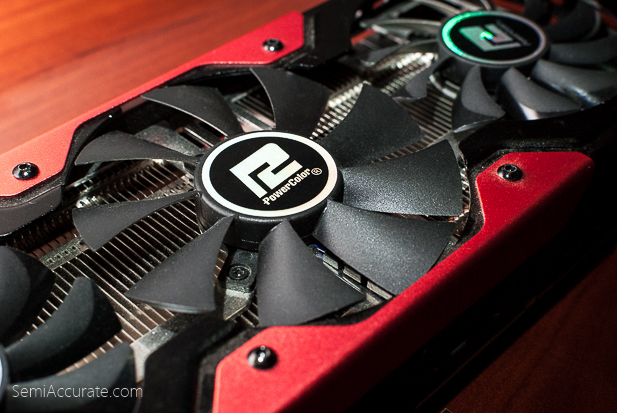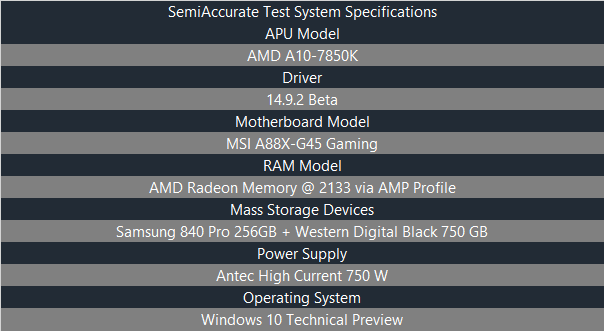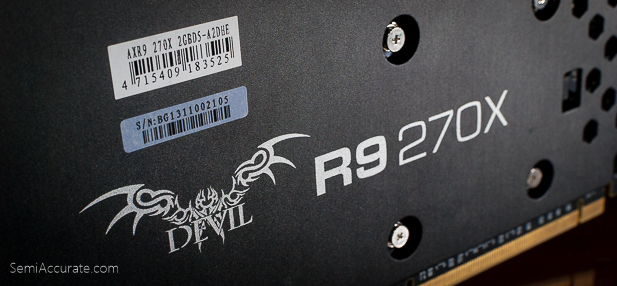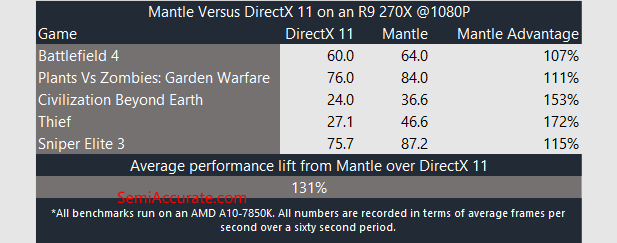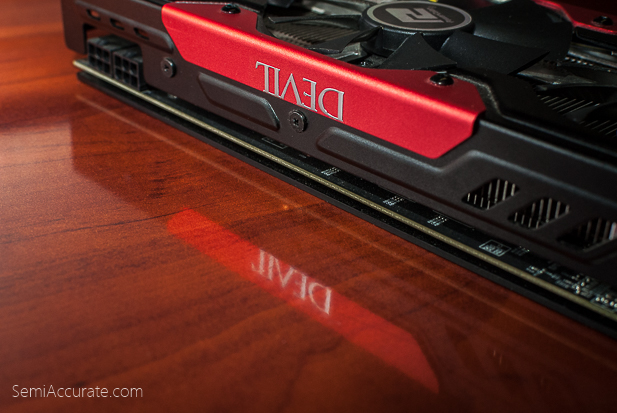In Part 3 of this series we’ll be looking at the benefits of AMD’s Mantle API over Microsoft’s DirectX 11. This is a five part series; in part 3 we’ll are looking at the performance of AMD’s midrange Radeon R9 270X GPU. For information on the Mantle API and DirectX 11 please read part 1 and part 2 of this series.
Our test system is built around AMD’s A10-7850K which is a $160 chip that has four cores and uses AMD’s socket FM2+. We chose the R9 270X because at ~$150 dollars it offers drastically more performance than cheaper solution without breaking into R9 290X territory. With 16 Gigabytes of DDR3 at 2.133 Ghz and a dual channel memory controller we consider this system to be a midrange PC.
For the sake of transparency we want you to know that AMD provided the A10-7850K and MSI motherboard we’ll be testing today along with codes for all the games we’ll be looking at. AMD also provided the our test system’s RAM. PowerColor provided our R9 270X. All of the other components we’re using were purchased at retail without the knowledge or consent of those companies. As always you can find our raw testing data on OneDrive.
Our Benchmarks
We’ll be using the same games that we detailed in part 1. Namely Civilization: Beyond Earth, Plants Vs Zombies: Garden Warfare, Thief, Sniper Elite 3, and Battlefield 4. Unlike our testing in part 1 these games will not be benchmarked at their maximum settings. Rather these game were set to their highest possible quality settings without anti-alising and with the aim of achieving as close to 60 frames per second as possible at a resolution of 1080P. Why 60 frames per second? Simply put because our test bench has a 60 Hz monitor. All of these games were playable but most of them were not smooth. The goal of using such a high frame rate is to meet what we consider to be an objective standard for smooth gameplay which is rendering at least as many frames per second as the monitor can display. Smoothness is more nuanced than that, but 60 frames per second is a good starting point.
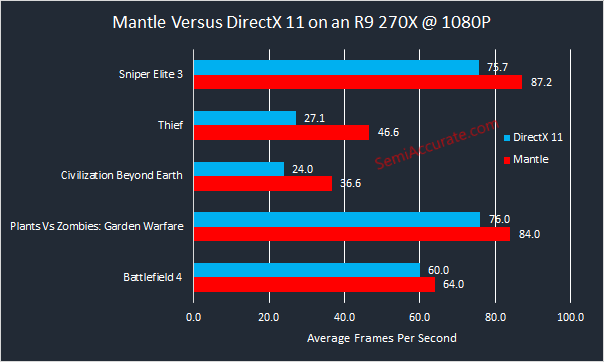
Things get off to a slow start in Battlefield 4 and Plants Vs Zombies with a ~10 percent improvement in both games. But Mantle knocks it out of the park in Civilization and Thief where both games are able to break the 30 frames per second barrier on our R9 270X. Sniper Elite also shows a solid gain.
Overall we see the biggest performance increase so far by using Mantle thus far on the midrange R9 270X; A whopping 31 percent increase over its DirectX 11 frame rates.
Mantle Improves Performance on Mainstream Hardware
There’s no question about it Mantle has a clear and perceptible impact on the performance of midrange hardware like the R9 270X. In two of the five titles we looked at Mantle is able to fill in where DirectX leaves performance on the table by bringing frames rates out of the mid 20’s and into the playable range. As many had surmised it seems that Mantle makes the biggest difference not on systems that can barely game or systems that can already pump out a solid 60 frames per second using DirectX, but rather on systems where both the CPU and the GPU, while competent, don’t represent the pinnacle of modern technology. Thus users with older Core 2 Quad’s, Lynnfield’s, Phenom II’s, and modern mid-range GCN GPUs stand to gain the most from Mantle enabled games.S|A
Thomas Ryan
Latest posts by Thomas Ryan (see all)
- Intel’s Core i7-8700K: A Review - Oct 5, 2017
- Raijintek’s Thetis Window: A Case Review - Sep 28, 2017
- Intel’s Core i9-7980XE: A Review - Sep 25, 2017
- AMD’s Ryzen Pro and Ryzen Threadripper 1900X Come to Market - Aug 31, 2017
- Intel’s Core i9-7900X: A Review - Aug 24, 2017
